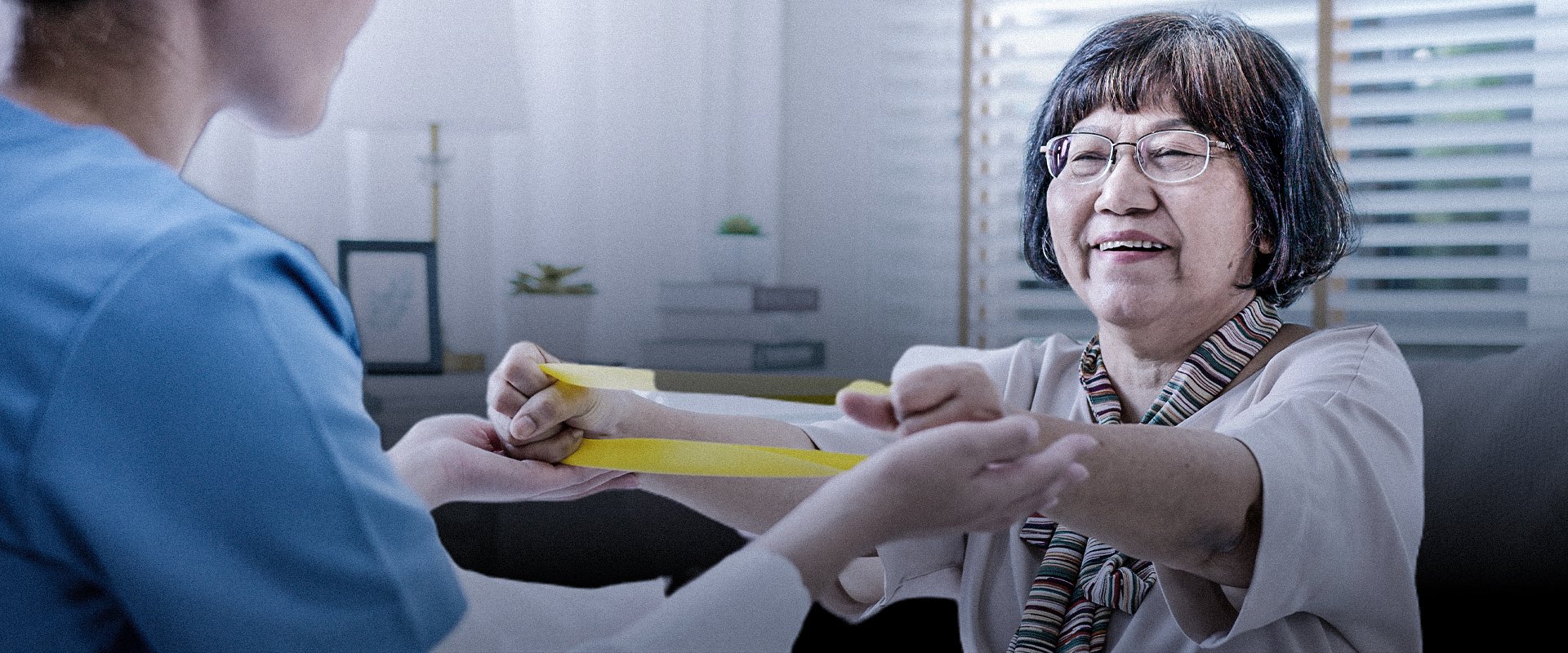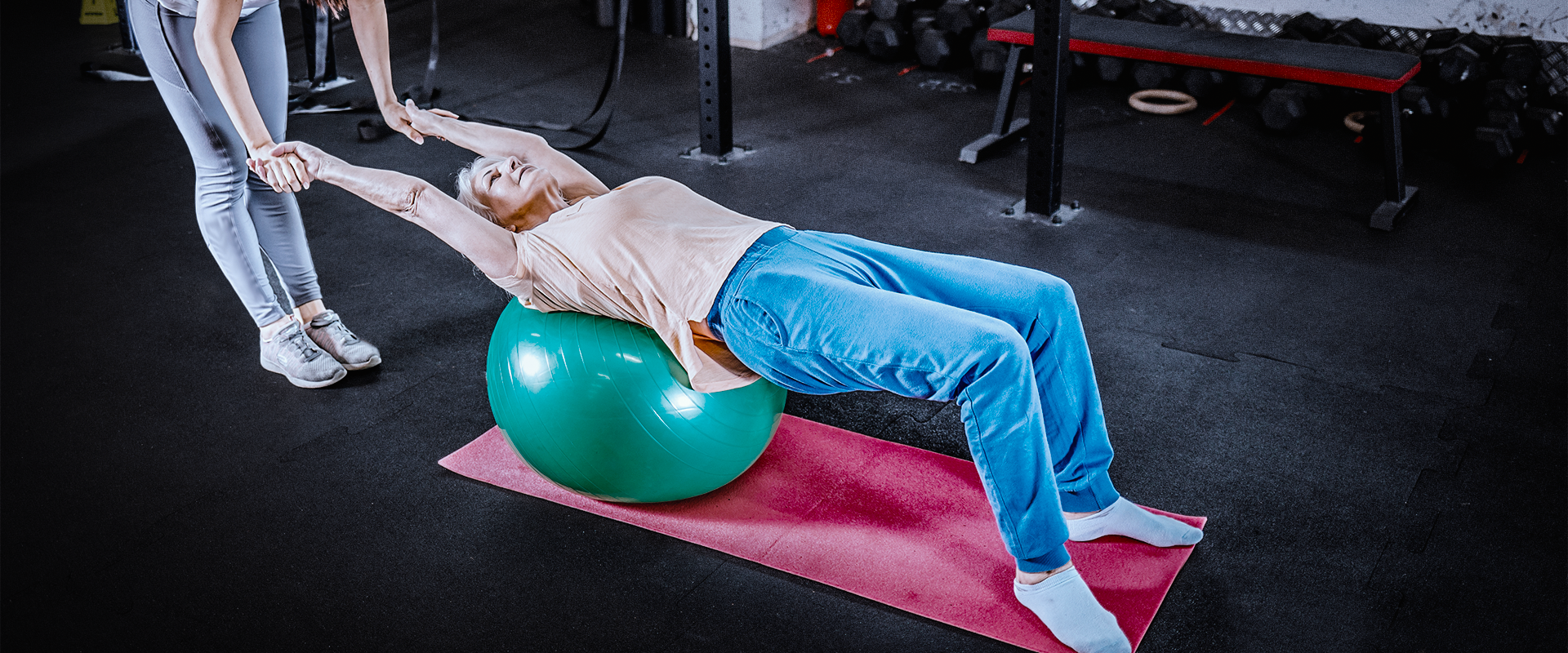
Rehab for Spinal Procedures
AT EVOLVE
Rehab for Spinal Procedures
HOW CAN PHYSICAL THERAPY HELP ME RECOVER FROM A SPINAL PROCEDURE?
Rehabilitation following a spinal procedure can vary in time and complexity depending on the type of procedure. One thing that is more certain, however, is that physical therapists play an important role in recovery from a spinal procedure or surgery. Working with a physical therapist can help facilitate healing from the procedure and return to a higher level of function. This is accomplished through the use of manual therapy techniques, therapeutic exercises, neuromuscular re-education and more.
WHAT DOES PHYSICAL THERAPY FOLLOWING A SPINAL PROCEDURE LOOK LIKE?
My team of physical therapists and I will help you recover from many different types of spine procedures. In the beginning your PT will work on reducing swelling around the procedure site, teach you how to protect the area and initiate return of muscle function around and adjacent to the affected area. As recovery progresses you will continue through a series of exercises to increase range of motion, improve strength and neuromuscular control, regain normal movement and then progress to sport or job specific activities. Usually this consists of 2-3 visits per week with your therapist as well as a series of exercises or other activities you will perform at home between visits. The frequency of visits often decreases near the end of your rehabilitation program.
HOW LONG WILL I NEED PHYSICAL THERAPY?
The length of your physical therapy course of care could vary from a month of treatment to several months of treatment depending on the type of procedure performed on your spine, any initial movement restrictions as well as other personal factors and impairments that need to be addressed. Your PT will be able to give you a more specific timeline for recovery after your procedure and as you move through the rehabilitation process.
While full resolution of symptoms can take some time, you may begin to see some results right away. You should experience improvements in many symptoms such as pain, stiffness, and inflammation within a couple of weeks. Progression in strength, flexibility and overall mobility that allows you to stand, walk, reach, bend, turn your head and perform job and sport-related tasks more comfortably, will take longer. Achieving long lasting results may take some time, but dedication to your program will help you achieve these results.
SPINAL PROCEDURES
There are many different procedures performed on the spine. Some procedures are minimally invasive, such as a nerve ablation, while others are more complex and invasive, such as a spinal fusion. Spinal procedures may be recommended by your physician or surgeon for many reasons but some of the goals of spinal procedures are as follows:
- Reduce localized pain in the spine
- Reduce radiating pain in the extremities
- Address changes in muscle strength or sensation caused by pressure on the spinal cord or spinal nerves
- Restore alignment of the spine
- Remove a mass in or near the spine or spinal cord
- Stabilize a spinal fracture
- Address a herniated intervertebral disc
- Improve movement and function
- Laminectomy
- Discectomy
- Spinal fusion
- Vertebroplasty and kyphoplasty
- Scoliosis surgery
- Foraminotomy
- Disc replacement
- Fracture stabilization
- Spinal nerve ablation
End Injury Progression
Rehab physical therapy for a spinal procedure has proven to prevent injury, slow and even stop pain issues, improve performance, and reverse injury progression in many cases.
Relieve Pain
The movements used in this technique can target your entire body helping you to manage discomfort and pain during the course of your physical therapy treatments.
Improve Range of Motion
Posture awareness is an important area to focus on due to the fact that certain positions may cause you further discomfort and pain.
Restore Mobility
You can regain mobility and flexibility by taking part in the stretches and exercises as prescribed by your physical therapist.
How Long Will Rehab Physical Therapy for Spinal Procedures Last?
If you decide to work with a physical therapist to help with spinal procedure rehab issues, your entire treatment plan could consist of around 8-20+ different physical therapy sessions that will each last 60-90 minutes. Once you complete your customized physical therapy treatment plan, you will be able to continue to do the prescribed stretches and exercises utilized during your PT sessions yet in the comfort of your own home.
WHAT CAN I EXPECT FROM PHYSICAL THERAPY AFTER A PROCEDURE ON THE SPINE?
Right after your procedure your physical therapist may use modalities and manual therapy techniques to address pain and inflammation around the procedure site. Depending on the type of procedure you had, certain spinal motions (typically bending, lifting and twisting) or positions may be restricted for a number of weeks, a practice called spinal precautions. You may also be asked to wear a brace around the spine to protect and stabilize the area while the procedure site heals. Even with these limitations in place, it is still often helpful to work with a physical therapist. Even if you cannot exercise the spine itself yet, you can still participate in exercises that safely target adjacent areas like the hips, abdominals or upper arms to prevent atrophy and stiffness in these areas.
As you progress through your recovery and the procedure site is allowed to undergo more stress, your physical therapist will begin to progress the interventions in order to help you achieve your maximal level of function. While each patient will receive an individualized exercise program, below are some of the common types of exercises prescribed following a spinal procedure.
Strengthening: Restoring strength and endurance to the muscles around the procedure site is an important part of post-procedure rehabilitation. It will help decrease pain and assist you in returning to your prior level of function. Strength losses can be attributed to a decreased level of exercise or activity pre-procedure as well as a result of pain, inflammation and modified activity post-procedure.
Stretching: Stretching may be needed after a procedure to restore normal muscle length. Restoring full or functional range of motion is very important following procedures to the spine and your PT will guide you on how to do this while maintaining movement precautions. Stretching may be focused on the spine as well as in adjacent areas.
Neuromuscular Re-education: This type of treatment is used to improve the motor control and coordination of muscles around the spine and in adjacent areas so the spine and limbs function well during both daily tasks and higher impact activities like athletics or job tasks.
Sport and job-specific Tasks: For athletes returning to sport or workers returning to a job, sport- and job-specific exercises will be incorporated later on in your rehabilitation to prepare the spine for the demands of returning to these activities. If there are any limitations to what you are allowed to do following your procedure, your physical therapist can help you find strategies to work around those limitations.
Having any type of procedure on the spine, even a small one, can feel daunting but my team of physical therapists and I are here to help make the recovery process as smooth as possible. Call Evolve today to get started on your recovery from your spinal procedure.
Mill Basin (located in Harbor Fitness)
6161 Strickland Ave
Brooklyn, NY 11234
Monday: 7am-8pm
Tuesday: 7am-8pm
Wednesday: 8am-5pm
Thursday: 7am-8pm
Friday: 8am-1pm
Park Slope (located in Harbor Fitness)
550 5th Ave.
Brooklyn, NY 11215
Monday: 9am-8pm
Tuesday: 8am-6pm
Wednesday: 9am-8pm
Thursday: 8am-6pm
Friday: 8am-3pm
Gravesend
372 Avenue U
Brooklyn, NY 11223
Monday-Thursday: 8am-8pm
Friday: 8am-3pm
Ready to take the next step to a healthier you?
Contact Us Today!
REHAB PHYSICAL THERAPY FOR SPINAL PROCEDURES!
Need Rehab for a Spinal Procedure?
Let our caring and compassionate physical therapists help you with relieving pain while getting you back on your feet comfortably.
Call now to schedule your first PT consultation free of charge.
Call: 1-718-258-3300







